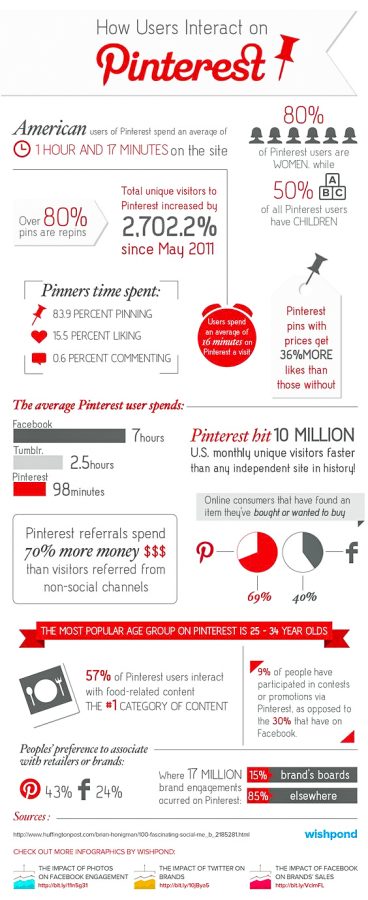Pinterest is known as the social media that doesn’t really feel like a social media. Users tend to get lost in their own world when scrolling through their feed. There are no political ads or news updates, so it’s easy to do so. But how exactly has the app remained so popular despite the short lifespan similar sites seem to have?
Tumblr was the first blogging and inspiration website. Founded in 2007 by David Karp, it quickly gained traction with 42 million blogs and an estimated $800 million value after its first five years. It popularized artists like Lana Del Rey and The Arctic Monkeys and was even used by former President Barack Obama (1).
In 2013, Yahoo bought the site for $1 billion. Tumblr users, however, were not happy. A petition against the deal went around and accumulated roughly 170,000 signatures. That began the downfall of Tumblr. In 2017, Verizon bought Yahoo, then in 2018, Apple removed the Tumblr app from their store because of child pornography circulating the site. That caused Verizon to ban sexually explicit content from Tumblr, and there went 40 percent of Tumblr users. Eventually, Verizon sold Tumblr for only $3 million to Automatic (1).
The death of this transformative site left a huge hole in the online community; a hole that Pinterest easily stepped into. After its creation in 2010, Pinterest grew rapidly. By 2011, Time Magazine called it one of the 50 best websites of the year. In January 2012, the site had 11.7 million users. While Tumblr was going through its own drama, Pinterest swiftly passed it in popularity. In 2019, Pinterest was valued at $12 billion (2).
Sure, the world has seen many social media sites since Tumblr—Vine, Instagram and TikTok, to name a few—but what makes Pinterest different? How is there still room in the online market for another social site?
While most social media platforms rely on likes, followers and the mental illness of its users, Pinterest is like its own little oasis. UMass Boston student Emma Pion says, “I like how you don’t have to worry about posting. I can just enjoy content.” It takes the stress and anxiety away from social media. In fact, eight in ten users say the platform fosters a positive environment (3).
Originally, Pinterest was mainly used by women aged 25-54, but in recent years, there has been a rise of Gen Z users. This might be due, in part, to the increased negativity on other platforms. The app creators pride themselves on a moderated feed to create this peaceful atmosphere.
Another perk of the platform is how personalized it is. UMass Boston student Brooke Vieira describes it as “find[ing] a lot of myself when scrolling through my feed.” By adding posts to boards or selecting the “Not Interested” button, users can customize their feed to their own needs.
Pinterest also separates itself through its creator fund. They pay creators $250 every time a pin gets 100 saves, and encourage their creators’ creative process. Pinterest values their creators and will reward them as such. On the other hand, Instagram only really pays creators for live videos, and TikTok only pays two to four cents per 1,000 views (4).
Pinterest is a great app with a team that truly cares about the wellbeing of its users, unlike other social media platforms that are popular today. Inspiration is only a part of its message. The real benefit is that users can just feel great when using it. The rise of Gen Z users proves that young people are tired of the toxic space that is social media as they know it. Hopefully, in the future, more companies will take a note from Pinterest and focus on the wellbeing of their audience rather than just the profit they make.
Sources
How Pinterest became paradise in the online world
September 16, 2022
An info-graphic highlighting Pinterest usage statistics and other details. Graphic by Bianca Oppedisano / Mass Media Staff





















































